The future Museum of Basque Science
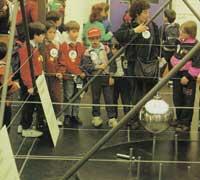
It cannot be said that in Euskal Herria there are many museums. In general, we find a short leg regarding the museum offer and, of course, those related to science are much more scarce. However, the International Council of Museums of UNESCO assigns to museums two main functions: on the one hand, the conservation and analysis of cultural heritage and, on the other, the didactic function of what is taught to serve for the training, information and enjoyment of the public. Of course, these two basic objectives can be debatable, but they are generally assumed by the international community. When analyzing our situation, we have also considered these two criteria useful.
Museums of Euskal Herria
In Euskal Herria we have 55 museums right now and soon we will have to add other projects: 8 museums in Bizkaia and 10 in Gipuzkoa.
However, if we analyze the areas of knowledge collected in these museums, we can say that the offer is even smaller. Few of the existing museums address science and technology.
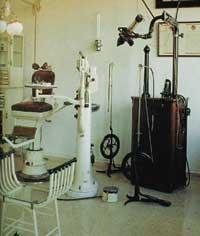
As mentioned above, the idea of making a great Science Museum in Euskal Herria is in the minds of many. In order to encourage a reflection on this, the Izurun Foundation published last November the book entitled Museum of Sciences and Techniques for an advanced society, the fruit of many years of work. The author of the book is Pablo Areso Barquin, director of the Science and Technology department of the Izurun Foundation. This work has had the collaboration of the Department of Culture of the Basque Government, which in addition to a provisional diagnosis includes other initiatives such as the future drafting of the museum program and the elaboration of the technical project.
Most science museums in the Basque Country belong to Natural Sciences. In general they are collections of fossils, minerals and shells or deal with other faunal groups. However, the teaching function is almost forgotten. There are also private collections of high scientific level but without pedagogical interest. Nature Sciences, Industrial Archaeology and Traditional Technology dominate our museums. But unfortunately, in Euskal Herria there is no museum that deals with experimental science or encourages citizen participation. In the study conducted by Pablo Areso this lack is highlighted first.
Opening the windows of the neighborhood
In the search for what is missing among us, Pablo Areso has analyzed the museum projects that are underway globally. In his book he has worked especially in science and technology museums in Europe. The main trends and models of these museums have been taken into account when designing the museum model proposed for the Basque Country.
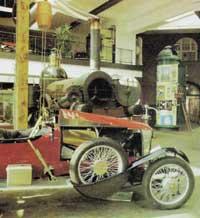
The starting point of the classification is the chronological criterion. In fact, at first glance it is clearly seen that each museum is the result of the cultural execution of the time in which it was created.
- The first scientific and technical museums were held to preserve and preserve the national heritage and the second function was to spread scientific culture among the public. XIX. These museums, which reflect 20th century society, can be considered children of the spirit of the Encyclopedia as the Conservatoire des Arts et Métiers in Paris, the South Kensington Museum in London or the Urania in Berlin.
- The second generation of museums highlights the goal of communicating scientific knowledge. There is then a desire to increase the break between experts and beginners. Museums and visitors of this period offer the possibility of manipulating objects and demonstrating experiments. This period includes the Palais de la Decouverte in Paris, the Deutsches Museum in Munich, the Anglo-Saxon Science Centers and the Museu de la Ciencia in Barcelona.
- Finally, the most advanced trends in museology indicate that science is not neutral. They provide a more global perception of science: the human dimension, its economic, cultural and environmental consequences must be taken into account. The new museums, therefore, offer us a global view of science with all its implications, promises and risks. From these latest trends emerged, for example, the Evoluon de Eindhoven, Museum für Verkher und Technik museums in Berlin and La Cité des Sciences et de L´Industrie in Paris.
New museum trends

Following the classification made by UNESCO itself, the current museology distinguishes the two main functions, but priority is given to education on heritage conservation. According to this, museums are no longer just storage places for objects but are used as an educational tool. The museum model of this decade aims to contribute to the progress of society, expanding the set of ideas, concepts and knowledge. This is the model that Pablo Areso has in Euskal Herria when talking about the advantages of a Science Museum. According to a fragment of the book, the museum will not be a solution for all problems, but it would be a good tool to bring the necessary scientific culture to society as a whole.
Modern museums offer new educational resources. It is a complementary model, that is, it does not replace the teacher or the book. Unlike these, it is about the visitor to properly internalize the scientific information they will receive through non-formal or academic resources.
However, when talking about the functions that museums must perform, education is not limited to students. The aim of the new museums is to be the home of culture and science that will reach society as a whole, as all adults and children need scientific literacy. Finally, new science museums need to be up to date in order to make known the changes and conclusions of research.
What will our museum look like?
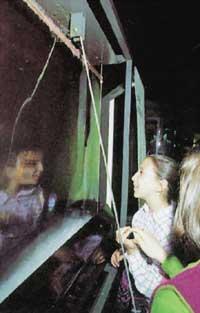
Despite being a challenge for the future, the Science Museum of the Basque Country has its solid foundations. In fact, Pablo Areso has collected ideas and suggestions derived from the reflection on the project. The report includes not only the possible philosophy, but also the problems to overcome.
The philosophy of the Basque museum can be summarized in the following general principles:
- The main function of the Museum is the dissemination of scientific information as a sustainable educational tool.
- Scientific and technical advances should be understandable to non-experts. However, each visitor can perform a different reading according to their knowledge.
- The museum will encourage the participation of visitors, a museum to see and touch. The visitor will participate and discover the manipulation.
- It is a “Museum of Ideas”, since the principles of science will not be exposed only through objects. Images, sounds, texts, models, monitors, computers or automated experiments will be used for this function.
- Old machines serve to teach technology. The historical perspective is very important, especially in times of serious changes; society will go to the museum in search of its identity.
- The new classification of the museum aims to offer an integrated and combined vision of science and its applications.
- Give a complete view of science and technology, explaining all the implications. Encourage responsibility for conscious use of inventions.
- The tour will be flexible. Each visitor will choose their path based on their motivation, preferences and level of understanding, although the information will be provided following an organized and understandable sequencing.
- Temporary exhibitions will be held updating scientific advances. Monographic themes will be discussed and the creative dynamics of the museum will be encouraged. In addition, these exhibitions will also be released abroad, being useful for international cultural exchange.
Practical and concrete issues
In addition to philosophy, Pablo Areso has collected in his book the problems and practical suggestions that will be given in the daily life of the museum. Learning from sight, the author lists:
- Who will manage the museum? Educational
institutions will appreciate the launch of the museum, which will serve to increase the cultural level of society. Private companies also consider museums as useful for human formation. The economic support of public authorities is also carried out in terms of interest and economic and political performance. The museum must be managed among all institutions through a legal status that combines the private and the public. - How will it be financed? Analyze
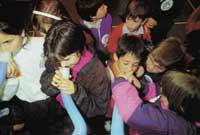 The didactic function predominates in the modern science museum. But education is not limited to students. Each visitor will choose their path and learn by manipulating objects. The Museum will also address everyday issues.
The didactic function predominates in the modern science museum. But education is not limited to students. Each visitor will choose their path and learn by manipulating objects. The Museum will also address everyday issues.
the financing and partial self-financing of the ordinary and extraordinary budget. The systems used in other countries are taken into account, especially the collection of entry to citizens. - A museum or many small museums?
Obviously, each model has its advantages, but Areso believes that the most viable thing is to make a large museum for the whole Euskal Herria. For an adequate diffusion of the museum is proposed the realization of itinerant exhibitions. - Where is the museum? As
for its location, many problems and debates are expected to arise. Quick transport routes and infrastructure will be analyzed. In any case, the museum should be a museum equidistant between provinces. - What kind of structure? In the
beginning, the museum will have permanent exhibition rooms, but as they develop, the technical sections must be structured. Define the steps and anticipate the final goal with pragmatism. The future cannot be endangered by bad projection. - But how will it be?
Spaces, travel of visitors and workers, flexible routes, air conditioning, lighting, disabled roads and safety should be taken into account. - For whom?
The recipients are students, professionals and workers, cultural entities and corporations, tourists or passing travelers; in general, the target audience is the whole society. The aim of the museum is to inform and entertain. You can make a personal, family, group or tourist visit to the museum. The level of training of visitors will not be homogeneous, so everyone can benefit. - What will the museum show?
To serve the whole of society, it will address appropriate and everyday issues. Some possible thematic blocks of the Science Museum can be:
- The universe and the conquest of space.
- Earth Sciences.
- Life and man.
- Matter and human work.
- Culture, languages and communication.
Humanist Museum
The museum model proposed by the Izurun Foundation will contribute to a humanistic view of science with all its relationships and implications. According to Areso, ours is a technical culture in which one cannot retreat. New generations must be taught to make good use of science and its applications. Scientific education will be an indispensable condition for the development and welfare and economy of society.
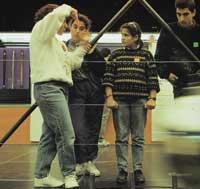
The project Museum of science and technology for a pioneering society is aimed, first of all, at educational institutions, since the museum is considered a complementary service to teaching. On the other hand, to be impregnated in the dissemination of science, it is necessary to address the other institutions, companies and collectives. Anyone who considers the Museum as an educational resource can participate in this reflection, since, basically, it is a challenge for everyone to implement a project of the future. The museum will tighten and heat the relationships between the scientific community and society.
The museums of Euskal Herria in the next issues of Elhuyar
We know a little more about museology and know better the characteristics of current museums. Elhuyar will also analyze in the next issues the museums of Euskal Herria related to science and technology. From February we will enter nine Basque museums. And by the end of the year we hope to make a global balance.
As we have said from the beginning, in the museums of Euskal Herria the function of preserving the heritage predominates, while the attitude of visitors is quite passive, leaving aside the pedagogical function in almost all cases. Will the future Basque Museum of Science allow us to see, touch, experiment, play and learn more about science?
Meanwhile, let's get to know the current Basque museums. In 1997 we will visit the following museums: Basque Museum of History of the Sciences of Leioa, Museum of Natural Sciences of Vitoria-Gasteiz, Aquarium of San Sebastian, Museum of Sciences and Techniques of Bergara, Planetarium of Pamplona, Sea Museum of Biarritz, Permanent exhibition of minerals and fossils of Urretxu, Museum of the Basque Technique of Barakaldo and Capital Mines.
I have read with interest the Museum of Sciences and Techniques for an advanced society of Pablo Areso. I. - Book entitled: Because I have often thought that a science museum like the one I have seen in other countries, we needed it in Euskal Herria, and this book addresses precisely this issue. The number that bears the subtitle tells us that after this volume we will be able to read another or other aspects of the same subject and it is something similar to the first stone of the design of a new science museum. Reflection in search of the model makes a lot of sense. It starts from the end of museums abroad to define the main brushstrokes of what may be most suitable for us. Two main trends are observed in science museums, one for collecting and conserving instruments and another for enriching visitor knowledge. The author chooses this second option and there is no reason. Museums based on this approach have left me the best memories. It will be twenty-five years when I saw the Museum of Transport and Communications in Lucerne. I have not yet forgotten some things I saw there. What I liked most was the opportunity to play and use everything that was offered to the visitor. The same criterion I have seen that the Barcelona Museum that I have visited again and again in the beautiful Science or in La Villette in Paris and we will hardly forget the essays made by the marriage and our three daughters years ago at the Palais de la Decouverte in Paris with high frequency currents and ray simulations. Concepts and feelings are forever incorporated into memory. In his presentation at the Conference Hall of the Seminary of San Sebastian, the author pointed out that the aim of the book was to encourage debate between people and entities interested in this topic. I want to put on the table a couple of ideas as a simple contribution to this debate.
A. Sagarna |





